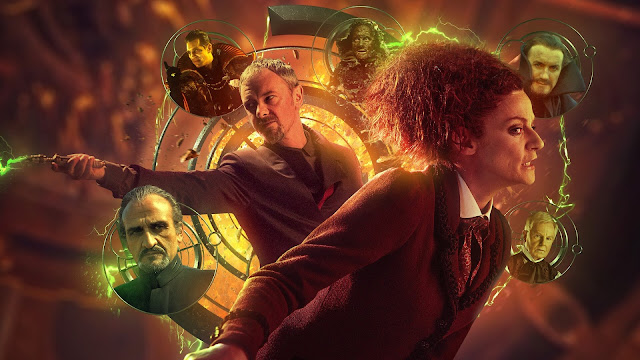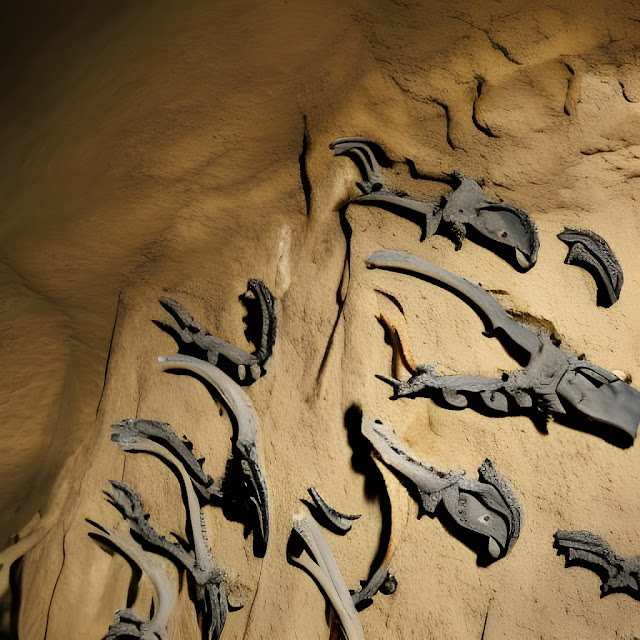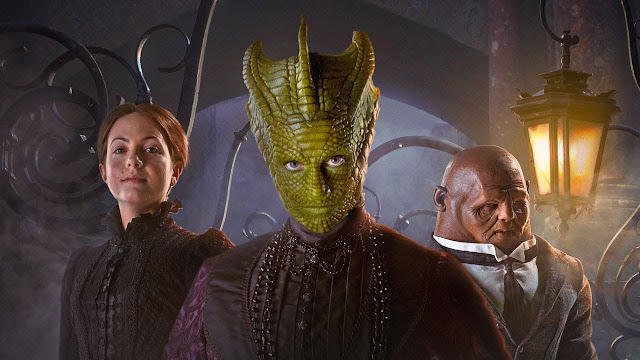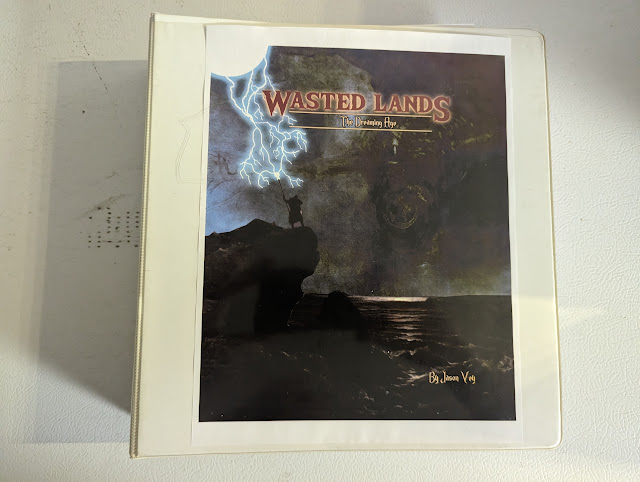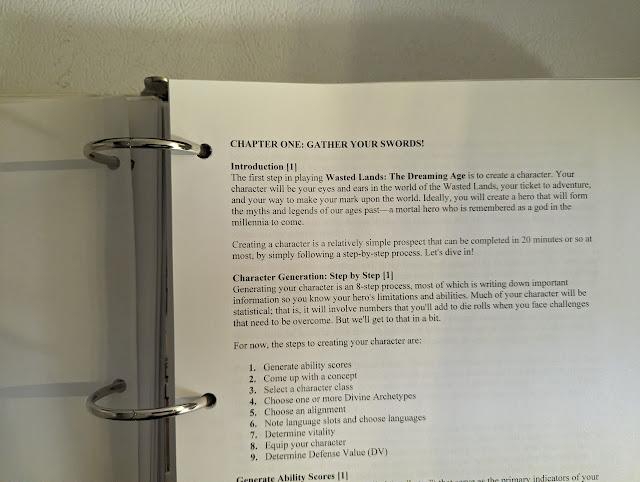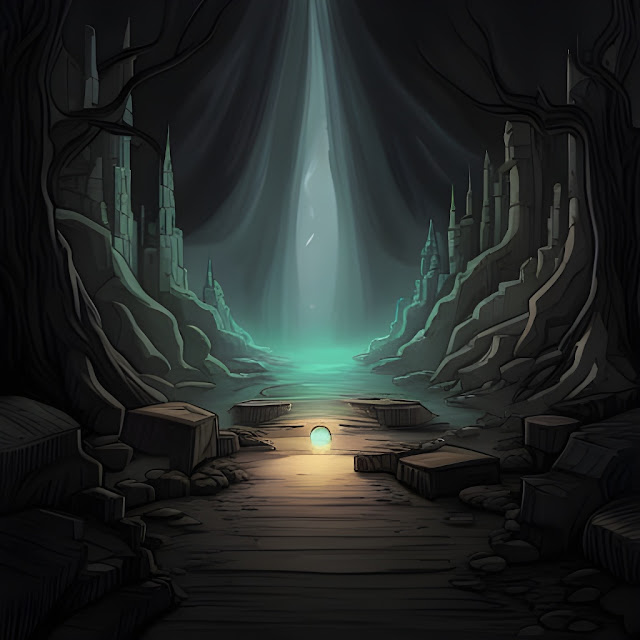 Agog
reduced the number of serving troops to fewer than 100 active persons
last year to economize, but short enlistments and and a semi
mandatory militia reserve balances the low “on paper” numbers.
The Prince Martial could call hundreds more to the colors instantly
in a state of at least moderate training.
Agog
reduced the number of serving troops to fewer than 100 active persons
last year to economize, but short enlistments and and a semi
mandatory militia reserve balances the low “on paper” numbers.
The Prince Martial could call hundreds more to the colors instantly
in a state of at least moderate training.
 Agog.
Agog.
Officially
the Holiest Protectorate Proproedrate of House of Gog Magosh. It is a
Nation of the Ornrian Disk located toward the Hot Zone (Amatublassu
Quarter) of the Westward Rim. It is located East of Yarkistan, and
the Foo-EE prefecture. To the south it shares a short fortified land
border with the Sumartrian Empire. The land is surrounded on the
East, North, and West by seas; the Western Shore is considered the
northern reach of the Mosasaur Coast of the Pearlfoam Abyss. Cape
Jubjoobeegog is the Northernmost point of land, and marks the opening
of the Tintub Strait. This is the origin of the mariner’s “Jub-jub
Beak” in the old hornpipe song, and the site of a critical
lighthouse guiding ships towards Takara and other harbors of the
Tintub Strait.
It’s
principle and only official language is Agogite, with some minorites
speaking Foo-Eish, Gopher and Goshite are are regional dialects more
than actual independent languages, and are officially suppressed.
Climate.
Climatically
the country has small variation, but can be divided into four zones.
The first zone is the cooler, humid Mosasaur Coast that enjoys
relative comfort due to the cool draughts from the Great Titan
Current of the Pearlfoam Abyss. Here the temperature in Winter
scarcely dips below 70, and in Summer rarely climbs above 100.
The
second zone is the Inland Zone.; A parched dusty dried mudstone
desert of deep crevasses and low hard mesas, This zone sees one or
two rainfalls per year from Pearlfoam storms, these storms last only
a few hours at most, but can dump monsoon like rains that flash flood
the deep aryos and canons and are extremely dangerous, loosed soils
will slide and collapse, reshaping the strange yellow brown terrain
into fantastic towers and toppling old forms into the canyons causing
the muddy watercourses to shift and change. After the storm, very
little water will remain, what does pool into basins makes precious
temporary oasis that will, for a week or two, nurture such shrubbery
and greenery as this zone will ever see, and becomes the haven for
wild goats, vicunya, and the white desert panther. Temperatures in
this zone can soar to 130 degrees, and the Westsmith Expedition
claimed to have recorded 141 degrees in Swimuary.
Zone
three is the Koonifer Plain beginning just north of Gulamesh and
running south to Lotarsh, it’s an arid mudplain by nature, but
millenia of human water management has turned it into an arid
prairie. This carefully managed prairie is called the Brazen Granary
and is among the most fertile land of the Ornrian Disk. Here some of
the earliest known domestication of common vegetables occurred; the
parsnip, the mustard plant, cucumbers, sunflowers, wheat, radish,
lettuces, and many others. Three to four crops a year are
commonplace.
The
final Zone is the Tintub Shorewall. This is the rockiest and least
habitable region of the land. A steep ridge or wall of rock curving
around the western coast and blocking the cool zephyrs that blow out
of Foo-EE, This wall-like ridge of rock is steep, unforgiving, harsh,
but gives a view of nearly the entire Brazen Granery and has many
ancient fortified sites upon it, and as they rise imperiously
directly from the sea to the west they provide no haven for pirates
or sea raiders in that direction, only the seabirds use these lonely
rocky cliffs as nesting sites.
People.
Agog
has been inhabited by a multiplicity of ethnicities over the ages.
Possibly Agog is the very cradle of civilization, for recently
archaeologists of the Gulamesh University working with a team from
Krautberg Kollege uncovered what is believed to be the earliest known
town on Ornria, consisting of mud brick and reed structures and palm
wood streets, but without pottery, and with stone tools of
sophisticated workmanship. The site, located near Frogesh is called
after the slight rise it was found under; Hooglehananany.
 The
oldest named people of the region were called the Beerberzerks, or
“Beer guzzlers” believed to be cognate with the “Beerjar
Culture Horizon. In their wake came Sasanazi, thought to have begun
the waterworks on the Brazen Prairie, and the Toolish, a goat herding
group out of the Yarking Lowlands of Yarkistan, entering by way of
Kinalabash and Lulubele. Possibly these herders were driven north
into the hot dry and inhospitable desert by the ancestors of the
Bogumbele peoples of the Sombu Blackjungle of modern Sumartria. It is
thought the Toolish first brought metalworking to Agog, and the
fusion of Toolish and Sasanazi technologies created the rise of proto
city states on the Brazen Prairie. These states warred with one
another fiercely and drove a period of technological innovation that
came to an end when Omgugle I called “the Surrite”, unified the
cities of the plain in the first Goshite Old Kingdom.
The
oldest named people of the region were called the Beerberzerks, or
“Beer guzzlers” believed to be cognate with the “Beerjar
Culture Horizon. In their wake came Sasanazi, thought to have begun
the waterworks on the Brazen Prairie, and the Toolish, a goat herding
group out of the Yarking Lowlands of Yarkistan, entering by way of
Kinalabash and Lulubele. Possibly these herders were driven north
into the hot dry and inhospitable desert by the ancestors of the
Bogumbele peoples of the Sombu Blackjungle of modern Sumartria. It is
thought the Toolish first brought metalworking to Agog, and the
fusion of Toolish and Sasanazi technologies created the rise of proto
city states on the Brazen Prairie. These states warred with one
another fiercely and drove a period of technological innovation that
came to an end when Omgugle I called “the Surrite”, unified the
cities of the plain in the first Goshite Old Kingdom.
Surrite
Dynastic leadership enshrined, literally, the monotheistic worship of
Gog, the Queen Mother of the Goshite People. Possibly amalgamting her
with Geshgurgeshgul the Toolish war goddess and the old Beerberzerk
Smooshyshesh, a cow or beer goddess (Dr. V Lobitoff speculates the
confusion here may be from the use of fermented milk as a beverage,
and the famous beer being in actuality a kefir like drink).
(see
Religion).
The
Goshites dwelt thousands of years in the hot dry lowlands, building
mudbrick villages, digging irrigation systems and growing the fruits
of Mother Gog, In those centuries three dynastic periods passed; the
Old Kingdom of Gosh, a GolGosh interreignum, the Neogosh Kingdom
dynasty, and the Late Gosh dynasty. The Late Gosh dynasty was able to
subdue the highlands people (the Gollygush tribes) and even reached
into Sumartria. Gosh Kings were Powerful, and dominated the Southern
nieghbors, even influencing the lands across the Tintub Straight,
until the coming of the Vus.
The
Vus organized the first sea-empire, trading across the Pearlfoam,
hazarding it’s massive predators in flimsy wooden bird-ships to
make themselves rich trading ores and raw metals, foodstuffs,
pottery, minerals, even live animals. This is when camels and horses
were first brought to Agog.
Though
the Vus were never a single polity, they dominated the Western
Pearlfoam coasts in the period of Early Metals. Vus mercenaries
participated in a series of Gogite civil wars that destroyed the Late
Gosh Kingdom, fracturing it and opening it to rival powers.
The
Vus built, or rather, rebuilt Ururtan, as a miniature Dogchewygrad in
mudbrick and stone rather than wood of the original, and created it’s
first wharfs, breakwaters, and the great quay.
The
Vus were traders, intent of commercial exploitation rather than
political control, and prospered as a people. In fact individual Vus
traders were still ethnically distinct into the early modern era.
Nonetheless in time new seafarers bringing larger better ships came
on the scene, displacing the old, a people known as the Sea Albs.
The
Sea Albs were tribes from the south of modern Yarkistan, more violent
than the Vus, they quickly displaced them and drove them out of the
Southern Pearlfoam. They then
attempted a suppression of Gogite culture in favor of Albish, but
this effort was both a failure, as the Albs took on more Gosh-Agog
influence than the reverse (Agog script is still used in the Alb
language), and was interrupted by the predation of Gu pirates from
Foo-EE.
Gu
Piracy culminated in a short-lived
Gu-Foo Kingdom in central Agog, though lasting only a few decades
before Gogites rose and pulled down nearly all elements of Gu
culture. This rebellion opened the coast to the
Yarks, bitter enemies of the Sea Albs, and in this free for all Agog
became a wild no mans land with political control being in the hands
of warlords, many unable to speak Gogite at all, and holding sway
over territory as small as a village, town, or even neighborhood. In
this chaotic environment the Agog priesthood quietly rebuilt it’s
power, and stealthily nurtured the smallholdings of the ancient
temple monasteries, and making important alliances with Warlord
families.
In
the wake of the Great Tintub War a century and a half ago, the Foo-Ee
marched in again and set about an exploitation programme; building
railways, opening modern universities, and running the state through
the Yarkish Kings Brusa
Bodadter, Bhogdotzu, and BodadterII. The assassination of Bodadter II
nearly 15 years ago, and the rising of the Gogites in the last decade
has seen the Foo-Ee driven out of the land, and the rise of Mustafa
Moustache a Gogite strongman claiming the title of Proproedrate.
Under this Proproedrate has occurred a renaissance of Gogish culture,
and the re-establishment of a vigorous Gog-Gosh
state.
Government.
Agog
is a Developing country, a former colony of Foo-EE with some
remaining ties in the major cities. It’s form of government is a
theocratic Counciliar Pro-Proedrate. This means Agogite Temple
Councils chose regional leaders called Proedrates subject to popular
veto by bloc, and bound by certain ethical and religious
expectations, with the chiefmost duty to elect and support a “high
governor”, the Proproderate. These lesser proderates once held
great power over local affairs but the traditional duties were eroded
away under the Foo-Ee Colonization and the chaotic warlord period
following. They are being replaced in that respect by the Zargovers,
a sort of vizier-like local governor chosen by the Proproedrate. This
has weakend the more conservative theocratic aspect of the local
governments somewhat but has made room for modernization programs to
reach the common folk.

Proproedrate Mustafa Moustache
Mustaffa Moustache is the current
Proproderate, and could be described as a strong man or dictatorial
leader, but seems in the main to be a rather benevolent example of
the type with a minimum of factional resistance to his rule in the
boundaries of Agog. Buslopbia is another matter, and will be
covered there. Little can be said for certain about Mustafa
Moustache. He is a shadowy figure, rarely seen or
photographed. His visage is uncommon in the towns of Agog, and
only three or four definite photos of him are known to be used in
Agogite Newspapers, many of which wind up cut out, and framed in
prominant places in private homes, but rarely seen in public.
Many rumors swirl about the man as if to fill the vacuum. Some are
quite wild, involving self mutilation, on one extreme, to fathering a
dozen hidden children on the other. some are unlikely; in the
aftermath of the Rose festival Earthquake it has been claimed that he
single-handedly saved a dozen people from death by lifting an
enormous weight of rubble, or of vehicles. Other people
claim Mr. Moustache invented vaccination, cured the plague, even
stopped bullets with the power of his voice. It is safe to say
the man has been raised to the mythical height of culture hero in his
land. One thing can be said certainly; he was a brilliant
guerilla leader who was the certain archetect of the expulsion of the
Foo-Ee from the country, and his comrades and assistants have been
quite happy to allow his mythos to overshadow thier own fame.
Agog
currently semi-occupies Buslobpia, mostly an economic domination that
has it’s roots in clever manipulation by the Proedrate in Buslopian
media and government. Strategic investments in powerful Buslopian
politicians has allowed Agog to avoid a military effort so far.
Buslopian exploitation is a source of increasing economic strength
but is fraught with future dangers to the regime.
Agog
is not signatory to any alliances at this time, but has a standing
enmity with Foo-Ee, Oppressorbad, Sumartria, and strangely; Gross
Montaine, over what slight it seems difficult to determine.
Primary
School education is now mandatory for minors, though the schools in
many places are open air and lacking the most trivial of supplies.
This growth in schooling has lead to a skyrocketing literacy rate.
And with it a new industry producing popular periodicals and books
written in classical Gogite Cuneiform has ushered in a flowering
renaissance of Gogite cuneiform.
Economy.
 The
Official currency of Agog is the Ishminub, or “clay fish”. It is
available in 1,6,12,180,and 360 Ishminub denominations. It is a small
round clay coin roughly 10mm wide.
The
Official currency of Agog is the Ishminub, or “clay fish”. It is
available in 1,6,12,180,and 360 Ishminub denominations. It is a small
round clay coin roughly 10mm wide.
Industrialization
remains limited, and efforts to build factories have previously come
to naught due to the scarcity of raw materials for exploitation.
The
Principle industry is food export. Fruits and Vegetables are shipped
out daily in refrigerated bulk ships. The sea is source of much of
the populations’ living. Free diving for pearl Oysters or Sponges
provides a dangerous but lucrative occupation for the bravest coastal
fishermen, while others seek Mosasaur Eggs, trawl for Xiphactines
Minor, guide sportsfishers after big Arthrodires, and siene for
shellfish, sardine and baitfish. Recently the Zargover of Gumph
discovered a plastic mine, and inkwells sunk under the Foo-EE near
Lotarsh have come under Agogite ownership, increasing the Agogite
coffers enormously, and bankrolling several progressive initiatives.
Agogite citizens now have universal health care, free education, new
monastic libraries are building in all communities, and the new
interlocking rail and bus mass transit system allows almost free
personal transportation across the country. In addition the expansion
of road and rail has included an expansion of the Agog Postal
Service, complete with a modern railway mail car between Gulamesh and
Astarte.
Modern
rails and refrigeration plants bring iced fish from the wharfs of
Ururtan to the great nationalized canning concerns Zushgug Inc. and
Lalubablush Ltd. in Gulamesh. Agog tinned oysters, sea scorpions,
sardines, and pickled mosasaur eggs are found under foreign labels in
grocery stores all over the Ornrian Disk. Minor Factories in Astarte
and Lotarsh produce canned, dried, and pickled vegetables and sauces.
Mostly for domestic consumption, but a fair amount finds it’s way
to tables in Guerat and Buslopbia. First class wheat is transported
by rail to new grain towers in the port of Ururtan. The valuable Bulk
Wheat of the lowland is finally raising farmers standards of living
out of sheer peasantry, and underpins the new government’s campaign
to end rural poverty.
Agog
is the source of Crimzogite the special clay used by Foo Ee craftsmen
for the production of world class pottery. White Chalk is found in
abundance, and in the North are salt mines, still operated as a penal
industry. Exploitation of the Ink Wells and the new Plastic mines
might kickstart an Industrial boom, but only time will tell.
The
Military.
The
Agog Holy Army consists of the Land Army, Army Air Service and Army
Marine Force, as well as Army State Provost (a state police). They
are led by a Warpriest Prince Martial under the supervision of the
Ministry of Defense and by the ProProedros as the supreme commander
during wartime. In times of peace its powers are executed through the
Prime Aldarate and the Defense Minister.

Prince Martial Bslam
The chief purpose of the armed
forces of Agog is the defense of the independence, the sovereignty
and the territorial integrity of the country, but it does include
participation in humanitarian, non-combat and peace support
operations. Military service was mandatory, with the age of 15 being
the legal minimum age for duty but reforms are underway and the Army
is transitioning to an all volunteer force.
The head of the Army is the
Prince Marital Oghrus Lith Bslam, the Lion of Lotarsh. He is
acclaimed for his successful defense during the siege of Lotarsh by
Foo-Ee, and the clever sortie assault delivered with makeshift armor
and sheer guts. It is rumored that he is a first cousin of Mustafa,
but that is unconfirmed.

The military now consists mainly of
a small fleet of obsolete aircraft and small sea vessels. The country
recently scrapped enormous amounts of obsolete hardware captured from
Foo-EE, such as light tanks, military goat carts, primitive breech
loading field guns, and Takaran split breech rifles.
The remaining armor force is tiny,
believed to number less than 10 medium tanks of near obsolete types
dating to the Tintub War. And the rifle deficit has not really been
made up. Anonymous agents have recently approached the Gumghuner
Rifle Works of Heavy Flashing inquiring about placing large orders
for rifles of modern type, and it’s believed these agents are a
front for Agog.
Military spending has generally been
low, last year only 1.5% of the country's GDP. This is however, up
from the previous decade. It has been observed that Agogite Army
Officers have been taking long leaves of absence and enlisting in
foreign armies presumably to receive training and learn modern war
techniques. In addition the state is constructing new warehouses
believed to be Army depots and seems to be laying in Wheat and
stockpiling medical supplies.

Lastly, the Agog army now occupies
and is reinforcing the FooEe underground fortifications along the
Southern border with the Sumartrian Empire. This line is quite
formidable, and features a mix of breadth based defense with forward
posts, obstructions and concentration points, deep underground
bunkers, heavy guns, tank traps and fougasses, and lanes of
overlapping fire fields. The majority of the nation’s remaining
stock of machineguns and artillery are invested in this line,
sometimes called Moustafa’s Ditch.
In addition to
Moustafa's ditch, every settlement hosts a caeserne, usually a small
house, hut, or in the biggest towns an actual, if tiny, fort where
the local garrison is housed. This caeserne serves as police
station, post office, telegraph office, and often fire brigade,
animal control, and city maintenance service. and is usually rather
sleepily manned; a single officer with a one or two enlisted men is
not uncommon, and it's believed some are in operation with a single
NCO filling all roles, sometimes with family and children pitching
in.
Ethnicity and Demographics
Agogite Ethnicity is a tangled and
sensitive subject. By law all who receive Agog’s Three Rites (see
Religion) are Agogites. The Government claims 98 percent of
the population is ethnically Agogite. Under Foo Ee rule the Agog
ethnic group was only 57 percent, the remainder made up of 6 percent
Yarkic, 12 percent Albish, 10 percent Gu, and a hodge podge
remainder. How to account for the differences? How do ethnic
minorities feel about the legalities? We simply cannot say, as no
survey has been permitted.
Culture.
Agog has a rich and ancient culture.
It’s writing system was the first known, and as a consequence Agog
has an incredible trove of ancient poetry, story, mythology, and
letter writing, a richness that has influenced literature and myth
over all of Ornria.
Agogite Cuisine is famous, and
divided into two general types; the coastal cuisine is dominated by
seafood, fresh vegetables , and acidic flavors from citron and
lemons, while the highlands are famous for smoky goat and vicyuna
dishes with flat-breads and yoghurt sauces.
Agogite music is distinctive;
dominated by the Phorminx, a stringed instrument of great antiquity,
the Crotalum, a sort of castanet, the Tibia, a very ancient double
flute, the Cochillia, a seashell percussion instrument, the Salpix, a
long trumpet-like bronze horn, and the sistrum. Percussion dominates,
yet strangely, the drum is not represented classically, and even in
modern Agogite music only the tambourine has made any headway. The
music is quick, rhythmic, with a suppressed melody, especially in
Shasshahaclavasha styles. This ancient form is well suited to the
Temple and Festival dances which include whirling and jumping moves
intended to bring on altered mental states in the participants.
Religion.
 Agog
is monotheistic; shrines, temples and monasteries bejewel the
country. The entire citizenry is dedicated to the worship of Gog
Goshgog; perhaps best translated as “Gog; the grandmother of all
things” a truly National Deity. Gog is believed to be incarnated in
the Gogpubu, a unique Baetylus, or “magic” stone housed in the
holiest part of the Royal Gubaban Temple of Gulamesh. On the other
hand, there is a widespread folk belief that the stone is actually
her coprolite and Gog herself lives in a secret temple hidden in the
mountains of the West from which she rules her realm.
Agog
is monotheistic; shrines, temples and monasteries bejewel the
country. The entire citizenry is dedicated to the worship of Gog
Goshgog; perhaps best translated as “Gog; the grandmother of all
things” a truly National Deity. Gog is believed to be incarnated in
the Gogpubu, a unique Baetylus, or “magic” stone housed in the
holiest part of the Royal Gubaban Temple of Gulamesh. On the other
hand, there is a widespread folk belief that the stone is actually
her coprolite and Gog herself lives in a secret temple hidden in the
mountains of the West from which she rules her realm.
Agog’s preisthood ,the Ghula, is
entirely transgendered, and several phases or steps of ancient
techniques of feminization or masculization are required to sacralize
the prospective acolytes who may be either male or female on entry to
the cult. Special divine favor is attributed to persons born with
intersex characteristics, and these individuals are seen as
possessing the divine favor, and are singled out for service in an
order of sybillic oracles. The primary functions of the priesthood
are to perform the Three Rites which all individual Agogites must
have. In additon, they must maintain the Oracle Sites; the 23
“divine” locations where an oracular Sybyl holds court and
delivers Delphic answers to questions posed.
The THREE RITES are required of all
Agog citizens, and, circularly, define a person as an Agog Citizen.
The first rite is the Rite of Shulzk, in which the participant must
disrobe before the altar and be ritually cleansed in incense. The
Second Rite is Abgal, in which the first work of a person’s
profession are burned at the altar, and the ashes used to mark the
supplicant that Gog might see them and prosper their labors. The
Third Rite is called Nidudubudu, glossed as “the return of the
great gift” traditionally this is a tithe to the temple, but can
take other forms, it is believed by many commoners that Mustafa
Moustache made nidudubudu with the blood of his breast mingled with
the flesh of his own genitalia, a ritual act that in Gogite context
represents an ultimate priestly dedication.
Secondarily the priesthood opens the
7 festivals and 5 fasts with a parade of ecstatic dancing and music.
They form the councils that select the local Proedrates, and enforce
the 3 Proscriptions (against Murder, Theft, and “insanitary”
behavior), originally this involved a trial-like Asseveration of
Fact followed usually by a punishment, ideally some sort of
amends; or in more serious cases heavy labor, corporal punishment, or
in cases of capital offenses calling down a stoning upon the
transgressor, but in modern Agog this has become a formal
apprehension of the suspect and delivery to the law enforcement arm
of the army.
In addition to the priesthood there
is an Abbotry or Monastic service to Agog. These Agog Monks do not
undergo the physical transformation peculiar to the priesthood,
rather they remove all hair from themselves and adopt a special mode
of dress, the Shyndyt, a sort of linen kilt. This ritual hairlessness
traditionally involved plucking and beeswaxing, but in modern times
the razor has been generally adopted. Though waxing is still ritually
required on the 7 festivals and 3 Fasts. The chief-most occupation of
this monastic wing is recovering, copying and preserving all
materials written in the Agogite script. As writing is seen to be a
gift of Gog, it is believed by Agogites to be intrinsically holy and
it is a doom to the mortal soul to destroy any written thing. Thus
everything written in even the most humble home of Agog, no matter
how mundane, is turned over to the monasteries during the 7
festivals. As one can imagine the monks preside over vast libraries,
libraries which they endeavor to maintain by copying the most ancient
materials before they deteriorate, organizing all new materials into
collections, creating indexes and curating every single character of
Agogite writing. This enormous task requires an almost insupportable
army of monks.
It is part of the governments
modernization drive to control the numbers of workers bled off into
monasteries, and to that end has bought a 200 specially engineered
cuneiform typewriters from Dactyle Brothers, of Heavy Flashing in the
2nd Polyester Freestate. The Monastic establishment as can
be imagined, is a heavy expense for the realm.
This labor drain is being somewhat
offset by two monastic sidelines; government clerking, and monastic
production of wheat beer under the Astartekas label. Since the
monasteries are already a massive information processing system the
government has turned over it’s bureaucracy to the care of this
institution. Functions normally handled by a government agency in
other states are a semi religious monastic interaction in Agog. For
instance getting a driver’s license requires a trip to the local
Army Caserne in the company of a local monk, to have the physical
evaluation of skill, and then a trip to the local monastery to
process the data and create the license proper.
Symbols.
 As
one might expect from so ancient a culture there are many important
symbols indicative of Agog’s history, civilization, and beliefs.
The colors Pink and Yellow are said to represent the evening sun and
the golden grain. The traditional woolen kaunakes,
a
kilt like garment decorated with highly colored tufts of wool, is
worn by both men (to the knee) and women (to the floor). The
decorative tufting that gives a feathered appearance is thought to be
a sort of textile prayer for rain. Men prize a Shoosh,
a woven shawl decorated with embroidery and tassels, and a good fez.
The Shoosh
traditionally
is crocheted by a mans mother, and contains in it’s knotted pattern
stories of the man’s youth and his parents lives.
As
one might expect from so ancient a culture there are many important
symbols indicative of Agog’s history, civilization, and beliefs.
The colors Pink and Yellow are said to represent the evening sun and
the golden grain. The traditional woolen kaunakes,
a
kilt like garment decorated with highly colored tufts of wool, is
worn by both men (to the knee) and women (to the floor). The
decorative tufting that gives a feathered appearance is thought to be
a sort of textile prayer for rain. Men prize a Shoosh,
a woven shawl decorated with embroidery and tassels, and a good fez.
The Shoosh
traditionally
is crocheted by a mans mother, and contains in it’s knotted pattern
stories of the man’s youth and his parents lives.
Both
sexes wear the Opanak, a leather sandal like shoe with pointed toe,
often decorated with colored wool tassels or pompoms. Each shoe’s
arrangement of leather cording, tassel
color,
pom pom size,
and
tassel material
can
indicate marriage status, family, social rank, home neighborhood and
even occupation.
The Wharse Rose is the national flower,
a pink and ancient cultivar, intensely fragrant and used in spicery,
perfumery, incense, candy, and attar making as well as simply being
ornamental.
 The
National Standard of Agog features a ground of Wharse Rose pink, a
color reckoned by Agogites to embody masculine strength and energy.
With the twin figures of Agog herself, in her Horned Goddess form,
representing the ascent of the Moon, meaning intelligence and wisdom,
and depicted in the ancient malachite color blue-green, associated
with water and with bronze making. Below Agog is Mudhibi
the
Gilish (scimitar) of Omgogle I. Mudhibi means something like smoking
blood or steaming blood and is a mythological sword that burns liars
and returns life to the dead. it’s a symbol of defense and royal
protection. The swollow tailed pennant form of the flag represents
the eternal fire Bilsugghar
that
burns before the Baelytus of Gog in the temple, and is in myth the
origin and end of all earthly things, and the fate of all who are
dishonest, unfaithful, and false. (the good being saved from this
fate in the garden of Hoshgoshergolgargath.
The
National Standard of Agog features a ground of Wharse Rose pink, a
color reckoned by Agogites to embody masculine strength and energy.
With the twin figures of Agog herself, in her Horned Goddess form,
representing the ascent of the Moon, meaning intelligence and wisdom,
and depicted in the ancient malachite color blue-green, associated
with water and with bronze making. Below Agog is Mudhibi
the
Gilish (scimitar) of Omgogle I. Mudhibi means something like smoking
blood or steaming blood and is a mythological sword that burns liars
and returns life to the dead. it’s a symbol of defense and royal
protection. The swollow tailed pennant form of the flag represents
the eternal fire Bilsugghar
that
burns before the Baelytus of Gog in the temple, and is in myth the
origin and end of all earthly things, and the fate of all who are
dishonest, unfaithful, and false. (the good being saved from this
fate in the garden of Hoshgoshergolgargath.
Agog
has a national motto, seen on it’s currency and on official
buildings; “Gog
Goshgog annûtu
șalmū ēpišiya”
meaning
“Gog, Goddess of Creation, these are the figurines of my sorcerer”
The opening line of the Epic of Zugajamaghosher. One of the great
national stories.
td p { margin-bottom: 0in }p { margin-bottom: 0.1in; line-height: 120% }a:link { so-language: zxx }
 Chantho : Chan-Professor, please!
Chantho : Chan-Professor, please!
